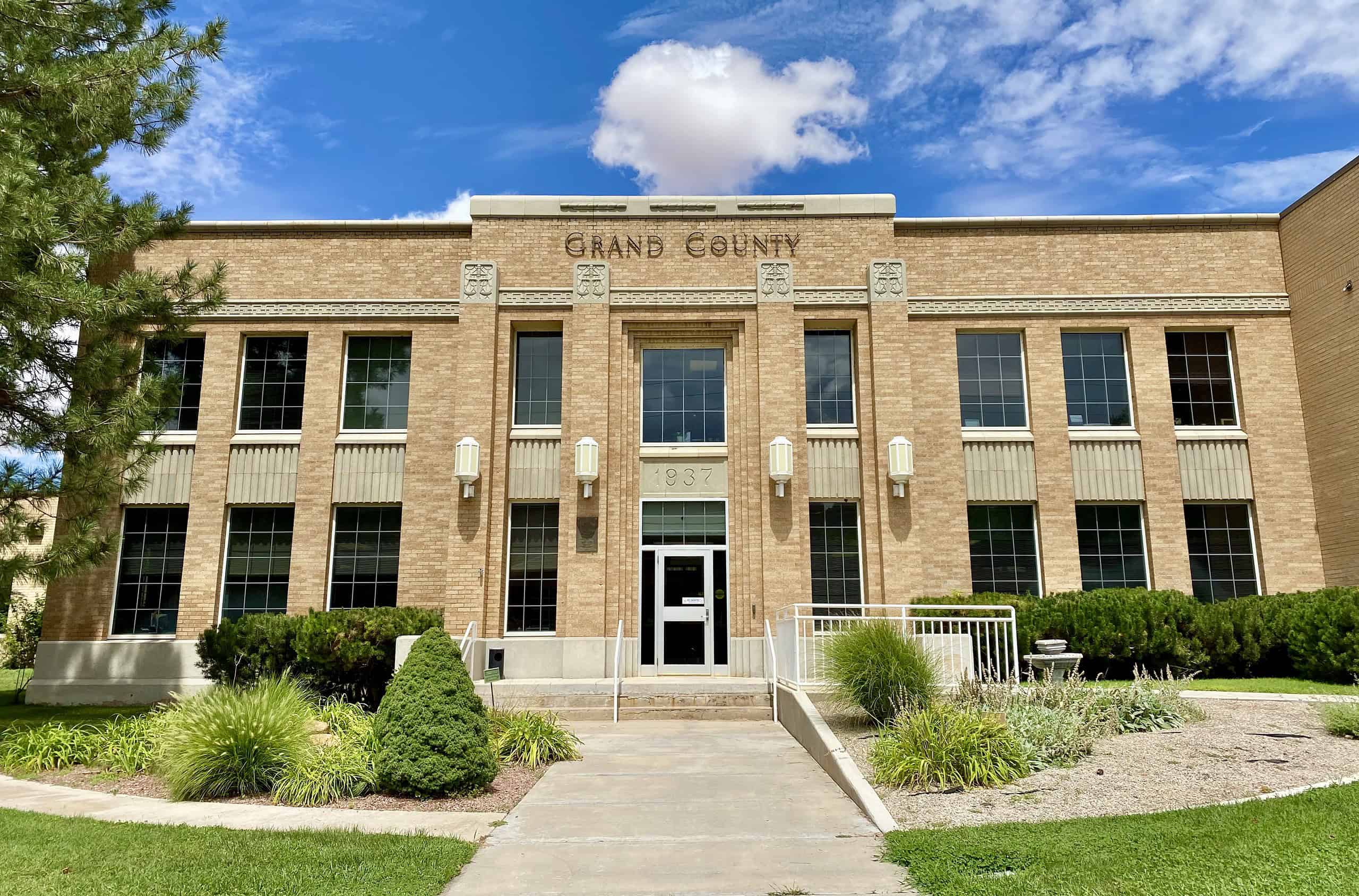Some information may be outdated.
Last year, development company Kane Creek Preservation and Development, LLC purchased property along Kane Creek Boulevard with plans to build a new “eco” subdivision in the area. The project has alarmed some county residents, not only because several households on the property had to leave and find new housing, but because the area has long been undeveloped and is the corridor to popular recreation areas with a remote feel.
Kane Creek Preservation and Development is making moves on the project, starting with a petition to establish a special service district for the area. Under Utah law, the property owners have the right to do so; at its Sept. 6 meeting, the Grand County Commission voted to name itself as the board of trustees for the new Kane Springs Improvement District.
Clerk/Auditor Gabriel Woytek reminded commissioners of the leadup to the petition to establish the Kane Springs Improvement District. In May, Kane Creek Preservation and Development, LLC submitted a request to the county for sanitary sewer service to their property, a formality in the process of creating a special service district; as the county is not a provider of sanitary sewer services, the request was denied. According to state statute, that denial opened the way for the development company to establish a district.
Utah law also allows for the county’s legislative body to elect to be the board of trustees for a new district.
“You have a ‘choose your own adventure’ option here,” County Attorney Christina Sloan told the commission, offering two proposed resolutions. One resolution would establish the Grand County Commission as the board of trustees for the new special service district; the other proposed resolution would appoint a five-member board with two county commissioners and three property owners or owner agents. Sloan noted that the developers originally requested a three-member board composed of all owners or owner agents.
“That is against our county policy,” Sloan said. “We always appoint at least one county commissioner to a board of trustees of development-specific districts.” She added that Grand and San Juan counties have a history of development-specific districts that “don’t function as well as we would hope.”
One advantage of appointing the commision as the board of trustees, Sloan said, is that the meetings would then by default be public.
“This is a development that the community is very interested in, given the sensitivity of the lands involved and also the density proposed, which is quite large,” she said. Kane Creek Preservation and Development told the Moab Sun News last year that they planned to build around 500 housing units.
The commission’s only chance to appoint itself the board, Sloan emphasized, is at the establishment of the district. If they appointed the commission to be the board and later wanted to transfer the responsibility, statute allows for that, but commissioners wouldn’t be able to become trustees later if they voted at the start to establish a different board composition.
The downside of making the commission the board, Sloan went on, is that commissioners don’t have the expertise to develop and operate a district like the one in question.
“You can delegate that authority, of course, to your developer professionals, but if the county commission is doing that, then it lessens the value of the county commission serving as the board,” she said. “I’m very conflicted about this. I don’t have strong advice either way.”
Commissioner Kevin Walker advocated for naming the commission as the board of trustees, since it was the only chance to do so.
“If later, we’re convinced that it would be better to transition to an appointed board, we have that option. But it doesn’t work vice versa,” he said.
Strategic Development Director Chris Baird cautioned commissioners against underestimating the amount of work it would take to act as the board.
“We’re talking about financing a multi-million dollar project, designing a multi-million dollar project, getting it built, operating it—it’s like adding an entire new department to the county,” Baird said, adding that county staff would not be available to help with any of those tasks.
Craig Smith, a representative of Kane Creek Preservation and Development, called in to the hybrid meeting, saying,
“We want to go on record in support of the proposal for a board that’s made up of both county commissioners and the resident applicants, property owners… We think that is a good way to go—it takes advantage of the expertise from both the county and the local property owners who would be benefitted by this.”
“We are not so in favor of just having the county commission as the trustees,” Smith went on. “We know that the county commissioners have lots to do and also have to make other decisions.”
He argued that it could be difficult for commissioners to “take off their commissioner hats” and act in the best interest of the district, especially if a situation arose when those interests didn’t align with the interests of the county.
Commissioners voted 6-0 to name themselves the board of the district (with Commissioner Evan Clapper absent), but agreed it’s not realistic to act as the board of trustees long term. They suggested developing another option for board composition with three commissioners and two owner agents, and discussed holding a workshop to discuss the idea further.
Smith emphasized that the developers are very eager to move forward with establishing the board and beginning work.
“We’re anxious to move forward with this district… do you know when the first meeting will be scheduled for the district board? We’d like to have one scheduled as soon as possible,” Smith said, repeating, “We’re anxious to move forward.”
The county surveyor still needs to approve the district’s plat, and the lieutenant governor must give final approval, for the board to be officially established.
Appreciate the coverage? Help keep local news alive.
Chip in to support the Moab Sun News.





